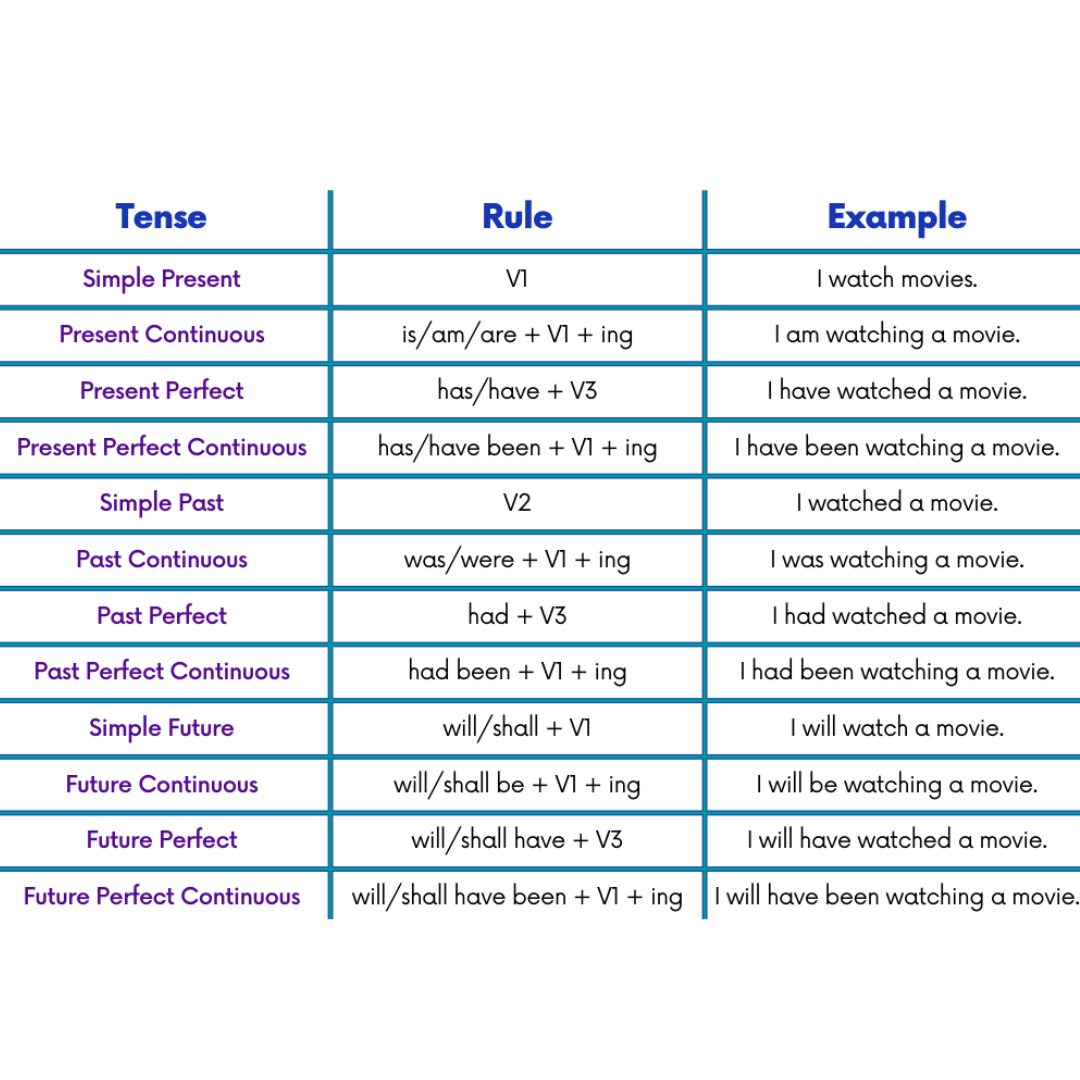Understanding the rules of tenses is essential for effective communication in any language. Tenses help us convey the time at which an action takes place, whether it is in the past, present, or future. By following the rules of tenses, we can ensure that our sentences are clear and coherent.
In English grammar, there are 12 tenses that are commonly used. Each tense has its own set of rules regarding the formation of sentences, the use of auxiliary verbs, and the placement of time markers. By learning these rules, you can improve your writing and speaking skills.
Tenses Rules Chart
1. Present Simple Tense: Used for habitual actions or general truths. Example: “She plays tennis every Sunday.”
2. Past Simple Tense: Used for actions that happened in the past and are completed. Example: “I visited Paris last summer.”
3. Future Simple Tense: Used for actions that will happen in the future. Example: “They will arrive tomorrow.”
4. Present Continuous Tense: Used for actions that are happening at the moment of speaking. Example: “He is watching TV right now.”
5. Past Continuous Tense: Used for actions that were in progress at a specific time in the past. Example: “She was studying when the phone rang.”
By following the rules of tenses and practicing regularly, you can improve your language skills and become more proficient in English communication. Remember to pay attention to verb conjugation, time markers, and the context in which the action takes place. With practice and dedication, you can master the rules of tenses and use them effectively in your writing and speaking.
